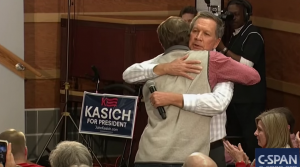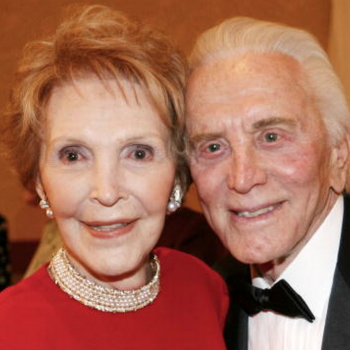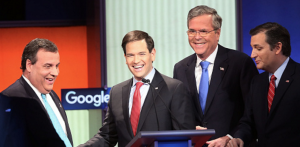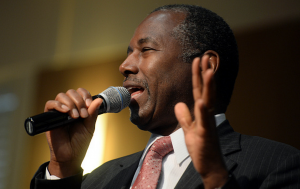As if you needed more proof that the “war on women” is, contrary to popular belief, being waged by liberals. Check out these three of the first paragraphs of the New York Times obituary of First Lady Nancy Reagan:
Mrs. Reagan helped hire and fire the political consultants who ran her husband’s near-miss campaign for the Republican presidential nomination in 1976 and his successful campaign for the presidency in 1980. She played a seminal role in the 1987 ouster of the White House chief of staff, Donald T. Regan, whom Mrs. Reagan blamed for ineptness after it was disclosed that Mr. Reagan had secretly approved arms sales to Iran.
Behind the scenes, Mrs. Reagan was the prime mover in Mr. Reagan’s efforts to recover from the scandal, which was known as Iran-contra because some of the proceeds from the sale had been diverted to the contras opposing the leftist government of Nicaragua. While trying to persuade her stubborn husband to apologize for the arms deal, Mrs. Reagan brought political figures into the White House, among them the Democratic power broker Robert S. Strauss, to argue her case to the president.
Mr. Reagan eventually conceded that she was right. On March 4, 1987, the president made a distanced apology for the arms sale in a nationally televised address that dramatically improved his slumping public approval ratings.
This caused Byron York to tweet:
Would not have guessed that 3 of first 7 paragraphs of NYT Nancy Reagan obit would be about Iran-contra. https://t.co/WBolghp3gY
— Byron York (@ByronYork) March 6, 2016
But perhaps the Washington Post’s 3,000+ obituary was worse, because it slammed her personally:
Mrs. Reagan took Washington by storm in 1981. Even before her husband — a movie star before he became governor of California — was sworn in, she swept into town with a larger-than-life cadre of wealthy California friends and celebrities who wore sable coats, knotted traffic with their shiny white limousines and threw lavish parties the likes of which were unprecedented at inaugural festivities. At first, the public seemed to embrace what was billed as the return of style and glamour after four years of the more modest style of peanut farmer Jimmy Carter.
But the glamour soon was seen as ostentation during a steep recession. After complaining that the White House residential quarters were in disrepair, and noting that she could find no set of matching china there, Mrs. Reagan turned to affluent friends to raise funds for $800,000 in renovations and $200,000 of new china.
Although no public money was spent, these two expenditures became symbols of excess. A high-profile trip to Britain for the wedding of Prince Charles and Lady Diana six months into the presidency only fueled her detractors.
Critics took to calling her ‘Queen Nancy,’ which eventually became a popular postcard. By December 1981, a Newsweek poll reported that 61 percent of the public considered her less sympathetic than previous first ladies to the needs of the disadvantaged.
Apparently, the mainstream media though the death of Nancy Reagan was the perfect chance to slam President Reagan as “stubborn” and corrupt, and to slam Nancy as “ostentatious.”
Classy.










